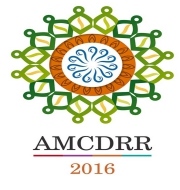New Delhi Declaration, Asian Regional Plan adopted at AMCDRR 2016
The 2016 Asian Ministerial Conference on Disaster Risk Reduction (AMCDRR) adopted ‘New Delhi Declaration’ and ‘Asian Regional Plan for Implementation of the Sendai Framework’.
It was the first AMCDRR to be held after the advent of the Sendai Framework for DRR (SFDRR) 2015-2030. The next AMCDRR will be held in Mongolia in 2018.
AMCDRR was established in 2005. It is a biennial conference jointly organized by different Asian countries and the United Nations Office for Disaster Risk Reduction (UNISDR).
World Tsunami Awareness Day
The Conference also commemorated the first World Tsunami Awareness Day (observed on 5 November) to spread awareness on tsunami. The observance of the day stressed on the importance of early warning systems and preparedness of communities in order to mitigate damage from the often devastating natural hazard.
New Delhi Declaration of AMCDRR
- It is a political commitment of participating governments towards preventing and reducing disaster risk in the Asian region.
- It also committed for strengthening the resilience of communities, nations and the Asian region for Disaster Risk Reduction.
- It commits to a people-centred and whole-of-society approach towards DRR in order to accelerate the implementation of global frameworks.
- It also emphasises the need to enhance the capacity of communities and ensure participation of all stakeholder groups towards achieving resilience.
Asian Regional Plan for Implementation of the Sendai Framework
- It focuses on the how to reduce disaster risk at national and local levels.
- It has longer term road map of cooperation and collaboration, spanning the 15-year horizon of the Sendai Framework.
- Besides, it also has a two-year action plan to further disaster risk reduction with specific, actionable activities.
What is Sendai Framework for DRR?
The SFDRR was adopted by at the Third World Conference on DRR at Sendai in Japan in March, 2015. It identifies targets and priority action areas towards reducing disaster risk by ‘reducing the damage caused by natural hazards like floods, droughts, earthquakes and cyclones through an ethic of prevention.
Month: Current Affairs - November, 2016


